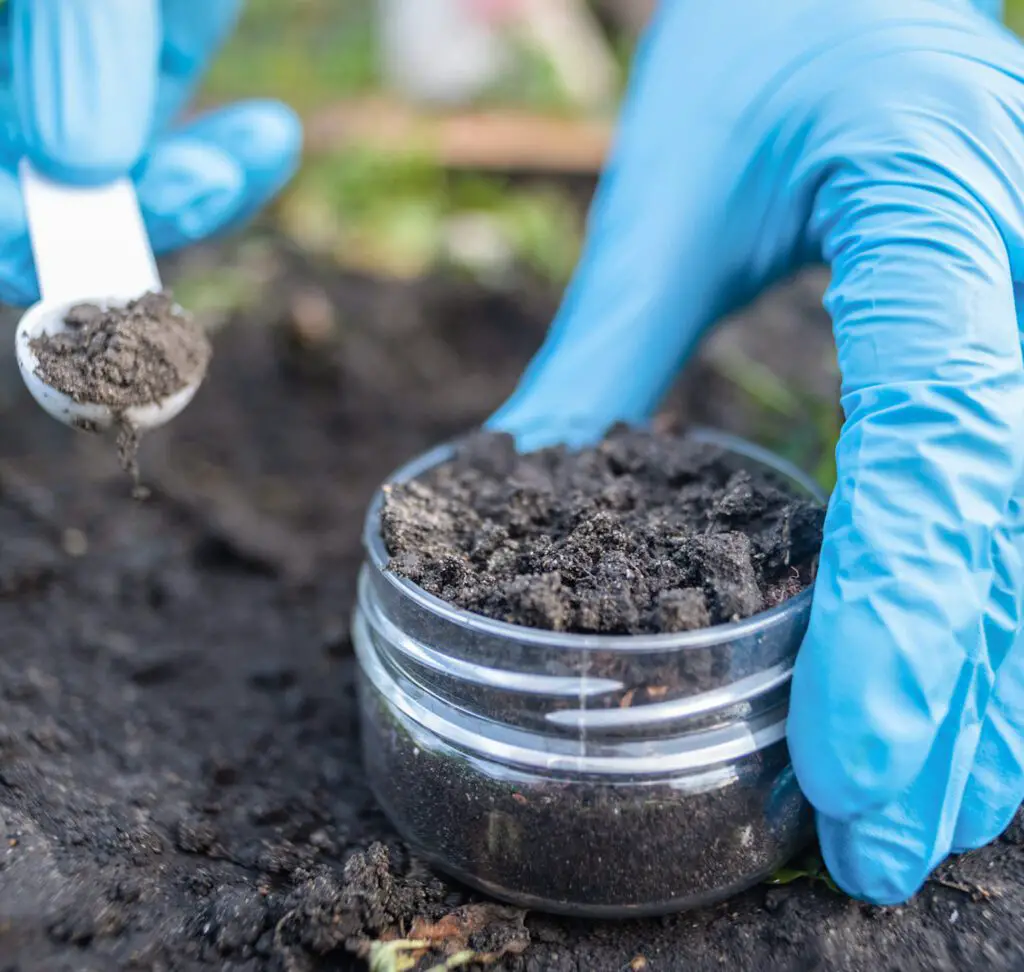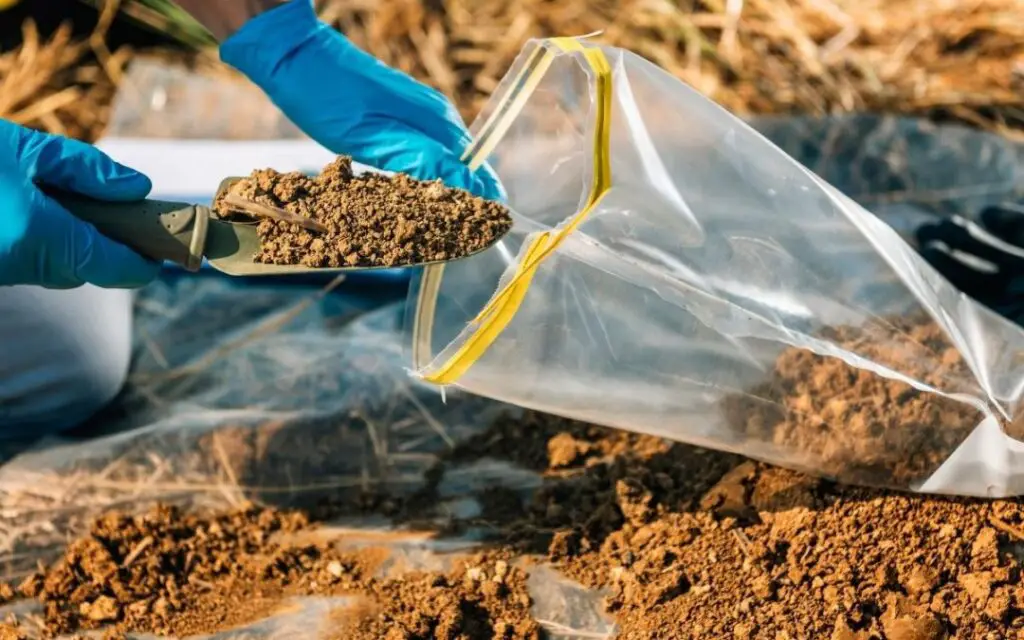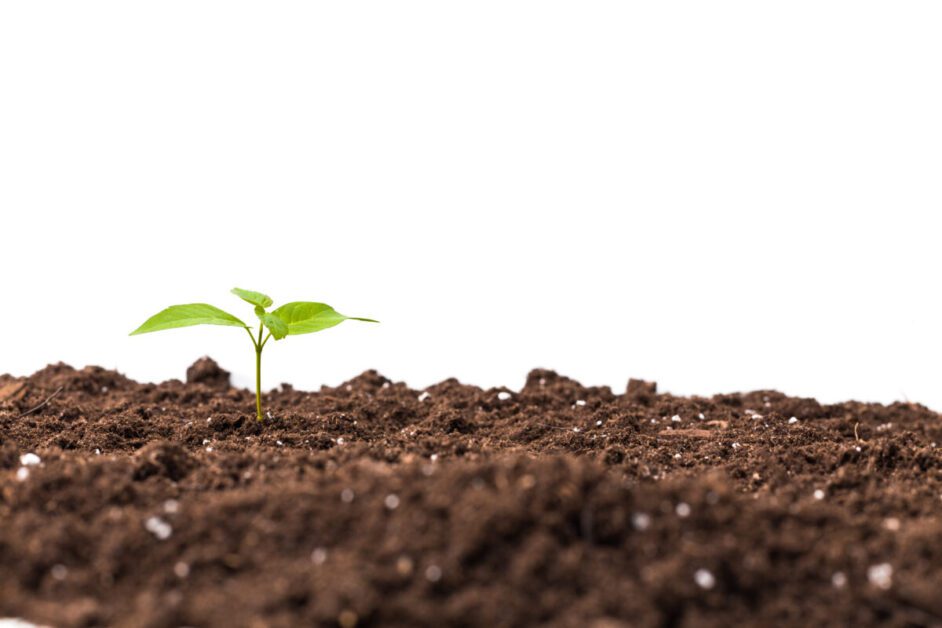How to Choose the Right Nutrients and pH for Your Plants: A Complete Guide
Table of Contents
Understanding the Importance of Nutrients and pH Levels in Plant Growth
Nutrients and pH levels play a crucial role in the growth and development of plants. Understanding the importance of these factors is essential for any gardening enthusiast or plant lover.

Firstly, nutrients are essential substances that plants need for their growth and survival. They are responsible for various physiological processes such as photosynthesis, cell division, and nutrient transportation. Without an adequate supply of nutrients, plants may exhibit stunted growth, yellowing leaves, and overall poor health. Different nutrients have different roles to play, such as nitrogen for leaf development, phosphorus for root growth, and potassium for flowering and fruit production. It is important to provide plants with a balanced and sufficient supply of these essential nutrients to ensure their optimal growth and productivity.

Secondly, pH levels in the soil greatly influence nutrient availability and absorption by plants. pH is a measure of acidity or alkalinity and affects the chemical reactions that take place in the soil. Most plants prefer a slightly acidic to neutral pH range, where nutrients are readily available for uptake. However, excessively acidic or alkaline conditions can lead to nutrient deficiencies or toxicities, hindering plant growth and health. It is important to measure and monitor the pH levels of the soil and make necessary adjustments, either by adding amendments or controlling irrigation water pH, to create an ideal growing environment for plants.
By understanding the importance of nutrients and pH levels in plant growth, gardening enthusiasts can make informed decisions and take appropriate measures to ensure the health and vigor of their beloved plants. Next, let’s explore in more detail the specific nutritional requirements of different plant species and how to analyze the existing nutrient levels in the soil to meet those requirements effectively.
Analyzing the Nutritional Requirements of Different Plant Species
Different plant species have distinct nutritional requirements that must be met in order to support their growth and development. Analyzing the nutritional requirements of different plant species is essential for gardeners and farmers to ensure optimal plant health and productivity. Understanding the specific needs of each plant species can help in identifying the appropriate nutrients that need to be supplied and in what quantities.

When analyzing the nutritional requirements of different plant species, one must consider several factors. These include macronutrients such as nitrogen, phosphorus, and potassium, as well as micronutrients like iron, zinc, and manganese. Each nutrient plays a crucial role in various physiological processes of the plant, such as photosynthesis, root development, and reproduction. By assessing the specific nutritional needs of different plant species, gardeners can determine the ideal fertilizers and amendments that will provide the necessary nutrients for optimal growth.
Analyzing the nutritional requirements of different plant species also involves understanding the variations in these requirements due to factors like soil composition, climate, and growth stage. Some plants may have higher nitrogen requirements, while others may need more phosphorus or potassium. By considering these variations, gardeners and farmers can tailor their fertilization practices to meet the specific needs of each plant species. This not only ensures healthy plant growth but also helps in preventing nutrient deficiencies or imbalances that can lead to stunted growth, disease susceptibility, or reduced yield.
Conducting Soil Analysis to Determine Existing Nutrient Levels
Soil analysis is a crucial step in understanding the nutrient levels present in the soil and determining the requirements for optimal plant growth. By conducting a soil analysis, gardeners and farmers can gain valuable insights into the existing nutrient levels and identify any deficiencies or imbalances that may be hindering plant health.

There are various methods and techniques used to conduct soil analysis, with each providing valuable information about the soil’s composition and nutrient content. One common approach is the use of soil testing kits, which provide a quick and easy way to measure the levels of essential nutrients such as nitrogen, phosphorus, and potassium. These kits often include color-coded test strips or solutions that change color based on the nutrient concentration in the soil.

In addition to testing for macronutrients, soil analysis can also help determine the levels of micronutrients that are essential for plant growth. These micronutrients, including iron, manganese, and zinc, are required in smaller quantities but are equally crucial for the overall health and productivity of plants.
By analyzing the nutrient levels present in the soil, gardeners and farmers can determine the exact nutritional requirements of their plants and make informed decisions regarding fertilizer application. This ensures that plants receive the necessary nutrients to thrive, leading to healthier and more productive crops. Conducting regular soil analyses also allows for adjustments in fertilization practices, helping to avoid excessive or inadequate nutrient application and minimize potential environmental impacts.
Interpreting Soil Test Results to Identify Nutrient Deficiencies or Imbalances
Soil testing is a crucial step in understanding the nutrient needs of your plants. By analyzing the results, you can identify any nutrient deficiencies or imbalances that may be affecting their growth. When interpreting soil test results, it is important to consider the recommended nutrient levels for the specific plant species you are growing. This information can be obtained from reputable sources such as agricultural extension offices or professional soil testing laboratories.
| Nutrient | Ideal Range | Below Ideal Indicates | Above Ideal Indicates |
|---|---|---|---|
| Nitrogen (N) | 30-50 ppm | Yellowing of leaves | Excess vegetative growth |
| Phosphorus (P) | 15-30 ppm | Poor root development | Limited impact on plants |
| Potassium (K) | 100-150 ppm | Weak stems, poor fruit | Reduced disease resistance |
| pH | 6.0-7.5 | Acidic or Alkaline soil | Nutrient availability issues |
| Calcium (Ca) | 500-2000 ppm | Blossom end rot | Reduced root growth |
| Magnesium (Mg) | 50-100 ppm | Intervenal chlorosis | Delayed plant growth |
One of the key factors to consider when interpreting soil test results is the concept of nutrient sufficiency ranges. These ranges define the optimal levels of nutrients in the soil for different plant species. If the nutrient levels fall below the sufficiency range, it indicates a deficiency, while levels above the range may indicate an imbalance. It is important to note that nutrient requirements can vary widely for different plant species, so it is essential to have a thorough understanding of the specific needs of your plants.
Additionally, soil test results often provide information on the soil pH level. pH is a measure of how acidic or alkaline the soil is and plays a vital role in nutrient availability for plants. Soil pH affects the solubility and availability of essential nutrients, and some plants have specific pH preferences. For example, blueberries prefer acidic soils with a pH level of around 4.5 to 5.5, while tomatoes thrive in slightly acidic to neutral soils with a pH level between 6.0 and 7.0. By interpreting the pH values from soil tests, you can identify whether the soil needs to be adjusted to meet the optimal pH range for your plants.
Exploring Different Types of Nutrients and Their Functions in Plant Health
Nutrients play a vital role in the overall health and development of plants. They are essential substances that plants need in varying quantities to thrive and maintain optimal growth. Understanding the different types of nutrients and their functions is crucial for any gardener or plant enthusiast.
There are two main categories of plant nutrients: macronutrients and micronutrients. Macronutrients, which include nitrogen (N), phosphorus (P), and potassium (K), are required in larger amounts and are key elements for healthy plant growth. Nitrogen is crucial for leaf and stem development, phosphorus aids in root growth and flower formation, and potassium enhances overall plant vigor and disease resistance. On the other hand, micronutrients, such as iron (Fe), manganese (Mn), and zinc (Zn), are needed in smaller quantities but are equally important. These micronutrients support various biological processes within the plant, including enzyme function, chlorophyll production, and seed formation.
By providing the right balance and availability of nutrients, gardeners can not only improve the overall health and appearance of their plants but also promote higher yields and better resistance against pests and diseases. It is important to note that the nutrient requirements of plants can vary depending on the specific plant species and their growth stage. Conducting soil analysis and understanding the nutritional requirements of different plants is crucial in order to determine the specific nutrients that may be deficient or imbalanced. With this knowledge, gardeners can then select the appropriate fertilizers and adjust the soil pH to create an ideal growing environment for their plants.
Selecting the Right Fertilizer Formulations for Optimal Nutrient Delivery
When it comes to selecting the right fertilizer formulations for optimal nutrient delivery, there are several factors to consider. One of the key considerations is the nutrient composition of the fertilizer. Different plants have different nutrient requirements, so it is important to choose a fertilizer that provides the necessary nutrients in the right proportions.
For example, nitrogen is an essential nutrient for promoting leaf and stem growth, while phosphorus is important for root development and flower production. Potassium helps with overall plant health and disease resistance. Therefore, a balanced fertilizer formulation that contains all three macronutrients (nitrogen, phosphorus, and potassium) is often recommended for general plant growth.
In addition to the nutrient composition, it is also important to consider the fertilizer’s release rate. Some fertilizers release nutrients slowly over time, while others provide an immediate boost. Slow-release fertilizers are beneficial for long-term nutrient availability, as they break down gradually and provide a steady supply of nutrients to the plants. On the other hand, fast-release fertilizers can be useful for plants that require a quick nutrient boost, such as newly transplanted seedlings or flowering plants.
Overall, selecting the right fertilizer formulation requires careful consideration of the nutrient composition and release rate. By understanding the specific nutrient needs of your plants and choosing a fertilizer that meets those needs, you can ensure optimal nutrient delivery and promote healthy and vigorous plant growth.
Considering Organic vs. Synthetic Fertilizers: Pros and Cons
Organic and synthetic fertilizers are both widely used in gardening and agriculture, each with its own set of pros and cons. Understanding these differences can help gardeners make informed decisions about which type of fertilizer to use.
One of the main advantages of organic fertilizers is their natural composition. Made from plant or animal sources, organic fertilizers slowly release nutrients into the soil, providing a steady supply of nourishment for plants over time. This slow-release nature helps prevent nutrient leaching and promotes long-term soil health. Additionally, organic fertilizers improve soil structure and fertility, fostering a thriving ecosystem for beneficial microorganisms. However, organic fertilizers can have limited nutrient concentrations, requiring larger quantities to deliver the same level of nutrients as synthetic fertilizers. Their composition can also vary, making it important for gardeners to understand the nutrients present in each specific organic fertilizer to avoid imbalances.
On the other hand, synthetic fertilizers are manufactured to provide specific nutrient ratios and concentrations, allowing gardeners to tailor their fertilization approach to meet specific plant needs. They are readily available and easy to apply, providing plants with a quick nutrient boost. Synthetic fertilizers are also typically less bulky than organic fertilizers, making storage and transportation more convenient. However, one drawback of synthetic fertilizers is their potential to contribute to nutrient runoff, which can harm water bodies and surrounding ecosystems. Moreover, their overuse or improper application can lead to nutrient imbalances and damage the soil’s structure and fertility in the long run.
When deciding between organic and synthetic fertilizers, it is essential to assess your gardening goals and the specific needs of your plants. Considering factors like soil condition, nutrient requirements, environmental impact, and personal preferences can help you make a well-informed decision that promotes healthy plant growth while minimizing potential risks.
Explaining the Role of Macronutrients and Micronutrients in Plant Nutrition
Macronutrients and micronutrients play crucial roles in plant nutrition, ensuring healthy growth and development. Macronutrients are required in larger quantities, while micronutrients are needed in smaller amounts, but both are equally important for maintaining optimal plant health.
Macronutrients are the primary building blocks for plants, providing the necessary elements for energy production, structural integrity, and overall functioning. The three main macronutrients are nitrogen (N), phosphorus (P), and potassium (K), commonly known as NPK. Nitrogen is vital for promoting leaf and stem growth, as well as enhancing the production of proteins and enzymes. Phosphorus aids in root development, flower production, and overall plant vitality. Potassium, on the other hand, regulates various physiological processes, such as nutrient uptake, water balance, and disease resistance.
While macronutrients are essential, plants also require micronutrients, albeit in smaller quantities. Micronutrients include iron (Fe), manganese (Mn), zinc (Zn), copper (Cu), molybdenum (Mo), boron (B), and chlorine (Cl). These trace elements are involved in enzyme activation, photosynthesis, and the production of hormones. Without an adequate supply of micronutrients, plants may exhibit deficiency symptoms, such as yellowing leaves, stunted growth, and reduced fruit or flower production.
Understanding the roles of macronutrients and micronutrients is crucial for gardening enthusiasts, as it allows for the proper formulation of fertilizers and amendments to meet plants’ specific nutritional requirements. By ensuring an appropriate balance of nutrients, gardeners can promote healthy growth, vibrant blooms, and robust yields in their plants.
• Macronutrients are required in larger quantities for healthy plant growth and development.
• The three main macronutrients are nitrogen, phosphorus, and potassium (NPK).
• Nitrogen promotes leaf and stem growth, as well as protein and enzyme production.
• Phosphorus aids in root development, flower production, and overall plant vitality.
• Potassium regulates nutrient uptake, water balance, and disease resistance.
• Micronutrients are needed in smaller amounts but are equally important for optimal plant health.
• Micronutrients include iron, manganese, zinc, copper, molybdenum,
boron,and chlorine.
• These trace elements activate enzymes,
facilitate photosynthesis,and
contribute to hormone production.
• Deficiency of micronutrients can lead to yellowing leaves,stunted growth,and reduced fruit or flower production.
• Gardeners should understand the roles of macronutrients
and micronutrients to formulate proper fertilizers
that meet plants’ specific nutritional needs.
• A balanced supply of nutrients promotes healthy growth,vibrant blooms,and robust yields in plants.
Adjusting pH Levels to Create an Ideal Growing Environment for Plants
Maintaining the correct pH levels in the soil is vital for creating an ideal growing environment for plants. pH, which stands for “potential of hydrogen,” is a measure of how acidic or alkaline the soil is. Different plants have different pH preferences, with some thriving in acidic conditions, while others prefer alkaline environments. Adjusting the pH levels can have a significant impact on nutrient availability and absorption, ultimately affecting the overall health and growth of your plants.
To start adjusting pH levels, you need to determine the existing pH of your soil. This can be done by conducting a soil test, which involves taking samples from different areas of your garden or growing space. Soil testing kits are readily available and can provide accurate readings of the soil’s pH level. Once you have obtained the results, you can then compare them to the ideal pH range for your particular plant species. If the pH level is too high or too low, you can make adjustments to bring it within the desired range. Various techniques can be used to raise or lower the pH, such as the addition of specific materials or the use of pH-adjusting fertilizers. By closely monitoring and adjusting the pH levels, you can create a more favorable environment that promotes healthy plant growth and maximizes nutrient uptake.
Learning How to Measure and Monitor Soil pH
Measuring and monitoring soil pH is a crucial step in understanding the growing conditions for your plants. pH is a measure of the acidity or alkalinity of the soil, and it directly affects nutrient availability and plant health. Fortunately, there are simple and effective methods to determine soil pH.
One method is to use a pH testing kit, which typically includes a testing probe and color-coded pH chart. To measure soil pH, gently insert the probe into the soil, making sure it is deep enough to capture a representative sample. Wait for the reading to stabilize and compare it to the chart provided. This will give you a general idea of the soil’s pH level. Another option is to send a soil sample to a laboratory for analysis. They will provide a detailed report of the soil’s pH as well as nutrient levels and recommendations for any necessary adjustments. Regular monitoring of soil pH throughout the growing season will allow you to make any necessary adjustments to create an ideal growing environment for your plants.
Understanding the Effects of pH on Nutrient Availability and Absorption
Soil pH plays a crucial role in nutrient availability and absorption for plants. The pH level of the soil can influence the solubility of different nutrients, thereby affecting how easily plants can acquire and utilize these essential elements. Each nutrient has a specific pH range in which it is most readily available for plant uptake.
For example, nitrogen, phosphorus, and potassium, commonly known as NPK, are macronutrients that are vital for plant growth. These nutrients are most accessible to plants when the soil pH is slightly acidic, ranging between 6.0 and 6.5. In acidic pH levels, the availability of these macronutrients increases, leading to better absorption and utilization by plants. On the other hand, if the soil pH is too alkaline or acidic, nutrient deficiencies can occur, hinder plant growth, and negatively impact crop yields.
In addition to macronutrients, micronutrients also play a crucial role in plant health. These essential elements, such as iron, manganese, zinc, and copper, are required in smaller quantities but are equally important for optimal plant growth. The availability of these micronutrients is greatly influenced by soil pH. For instance, iron deficiency is commonly observed in alkaline soils, as the high soil pH makes it more challenging for plants to access and absorb this essential micronutrient. Understanding the effects of pH on nutrient availability and absorption is essential for maintaining healthy plants and maximizing their growth potential.
Implementing Effective pH Adjustment Techniques for Acidic or Alkaline Soils
Implementing effective pH adjustment techniques is crucial for creating an ideal growing environment for plants in acidic or alkaline soils. When the pH level deviates from the optimal range, it can hinder nutrient availability and absorption, leading to stunted growth and nutrient deficiencies.
For acidic soils, a commonly used technique is to add lime, such as agricultural limestone or dolomite, to raise the pH. Lime contains calcium and magnesium carbonates that neutralize the acidity and increase the pH level over time. It is important to conduct a soil analysis and follow the recommended application rates to prevent over-liming, which can lead to excessively high pH levels. Additionally, incorporating organic matter, such as compost or well-rotted manure, can also help buffer the soil and gradually increase the pH.
On the other hand, when dealing with alkaline soils, lowering the pH can be a bit more challenging. Sulfur is commonly used to acidify alkaline soils by oxidizing to form sulfuric acid. However, this process takes time and it is important to regularly monitor the pH and adjust accordingly. Amending the soil with elemental sulfur, aluminum sulfate, or iron sulfate can help gradually lower the pH levels. It is crucial to carefully follow the recommended application rates and avoid excessive use, as too much acidic amendment can damage delicate plant roots.
Overall, implementing effective pH adjustment techniques is essential for ensuring optimal nutrient availability and absorption by plants. Regular soil testing, monitoring, and appropriate amendments based on the soil analysis results can help maintain a balanced pH level, creating a favorable environment for healthy and thriving plant growth.
Developing a Customized Plant Nutrition and pH Management Plan
When it comes to developing a customized plant nutrition and pH management plan, it is important to understand the specific needs of your plants. Different plant species have varying nutritional requirements and pH preferences, and tailoring your plan to accommodate these factors is crucial for optimal growth and health.
To begin, conducting a soil analysis is an essential step in determining the existing nutrient levels and pH of your soil. This analysis will provide valuable insights into any deficiencies or imbalances that may be present, allowing you to make informed decisions when it comes to nutrient supplementation and pH adjustment. There are several methods available for soil testing, including DIY kits and professional laboratory services, with each providing varying levels of accuracy and detail. By interpreting the soil test results, you can identify specific nutrient deficiencies or excesses, as well as the current pH level. This information will serve as the foundation for customizing your plant nutrition and pH management plan. Understanding the unique needs of your plants and implementing targeted solutions will help optimize their growth, productivity, and overall well-being.
For more details check the vedio below:
What are the essential nutrients required for plant growth?
Essential nutrients for plant growth include macronutrients such as nitrogen, phosphorus, and potassium, as well as micronutrients like iron, manganese, and zinc.
How can I determine the nutrient requirements of different plant species?
Analyzing the nutritional requirements of different plant species can be done by referring to research materials, consulting with experts, or examining specific plant guides and databases.
Why is soil analysis important in developing a plant nutrition plan?
Soil analysis helps determine the existing nutrient levels in the soil, allowing you to identify any deficiencies or imbalances and develop a customized plant nutrition plan accordingly.
What types of nutrients are necessary for plant health?
Plants require both macronutrients (needed in larger quantities) such as nitrogen, phosphorus, and potassium, and micronutrients (needed in smaller quantities) such as iron, manganese, and zinc for optimal health.
What is the difference between organic and synthetic fertilizers?
Organic fertilizers are derived from natural sources, while synthetic fertilizers are artificially created. Organic fertilizers release nutrients slowly and improve soil health, while synthetic fertilizers provide immediate nutrients but may have environmental concerns.
How does pH affect nutrient availability for plants?
pH levels influence the availability of various nutrients for plants. Some nutrients are more readily available in acidic soil, while others are more accessible in alkaline conditions.
How can I measure soil pH?
Soil pH can be measured using a soil pH testing kit or by sending a soil sample to a laboratory for analysis.
What are some effective techniques for adjusting pH levels in soil?
pH adjustment techniques include adding agricultural lime to raise soil pH, sulfur or elemental sulfur to lower soil pH, or using acidifying or alkalizing agents such as vinegar or wood ash, respectively.
How often should I monitor soil pH levels?
It is recommended to monitor soil pH levels at least once a year, and more frequently if noticeable changes in plant health or nutrient deficiencies occur.
How can a customized plant nutrition and pH management plan benefit plant growth?
A customized plant nutrition and pH management plan ensures that plants receive the appropriate nutrients and pH levels for optimal growth, leading to increased yields, improved plant health, and reduced nutrient deficiencies.

Kanike Sreekanth, a prolific writer at SouthElMonteHydroponics, brings a unique blend of creativity and scientific rigor to the table. With a degree in Horticulture from a prestigious institution, Kanike’s expertise spans hydroponic farming, plant biology, and agricultural sustainability. Their passion for exploring innovative cultivation methods and promoting environmental stewardship drives them to uncover new insights in the realm of hydroponics. Kanike’s writing serves as a conduit for sharing their knowledge and inspiring others to embrace alternative farming practices for a more sustainable future.







